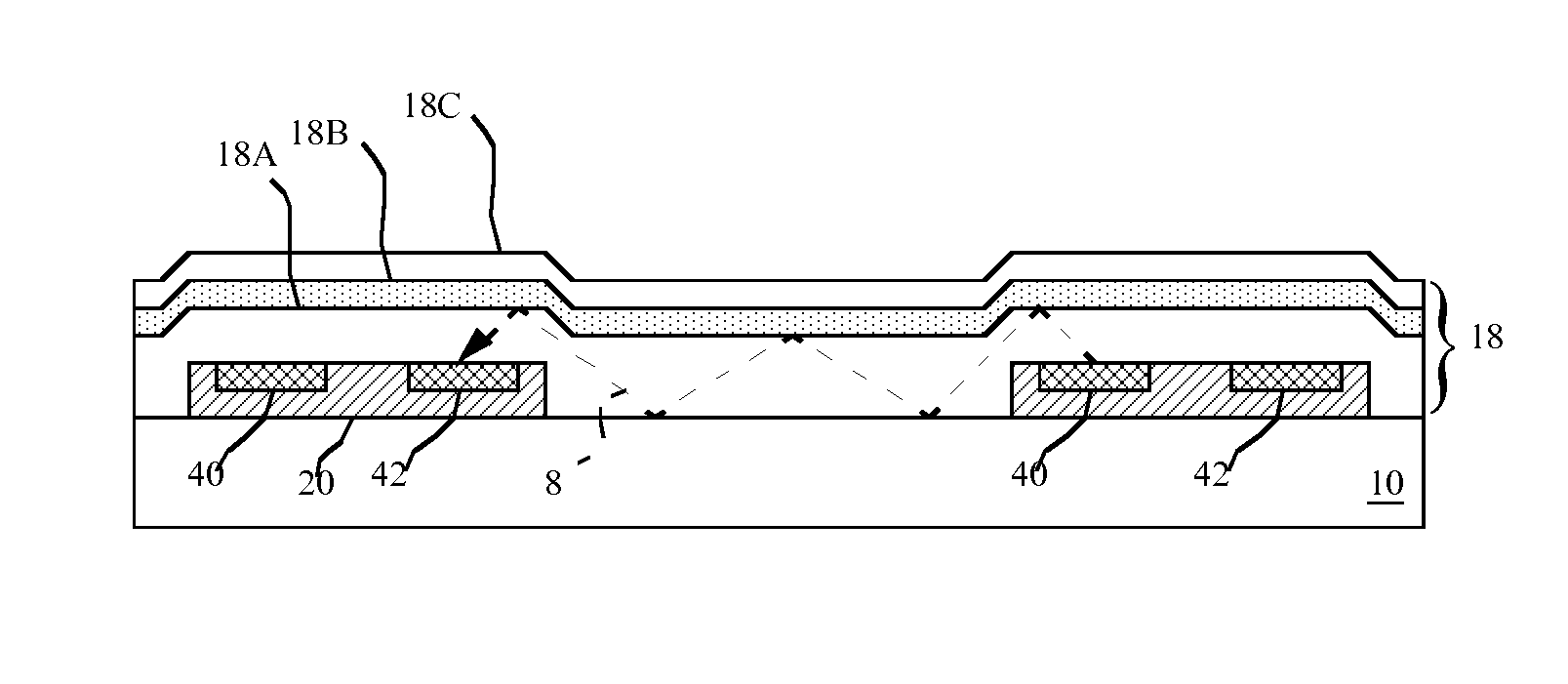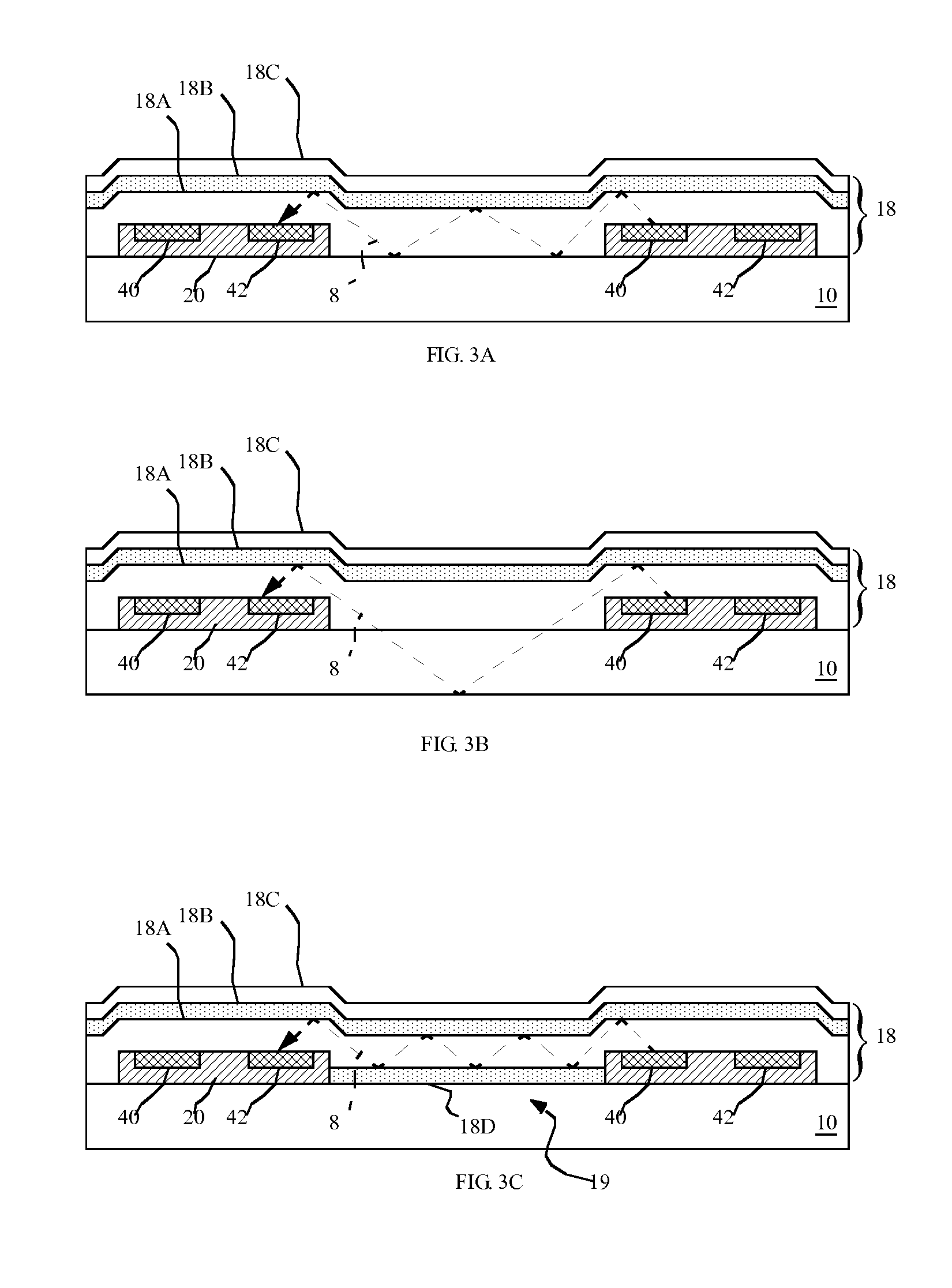Electroluminescent display device with optically communicating chiplets
a display device and chiplet technology, applied in the field of display devices, can solve the problems of low performance, low communication efficiency, and high manufacturing process cost, and achieve the effects of improving communication, reducing latency, and increasing bandwidth
- Summary
- Abstract
- Description
- Claims
- Application Information
AI Technical Summary
Benefits of technology
Problems solved by technology
Method used
Image
Examples
Embodiment Construction
[0028]Referring to FIGS. 1 and 2, an electroluminescent display has a display substrate 10 having a device side 9 and a display area 11 (shown in FIG. 4). A plurality of patterned first electrodes 12 are formed over the display substrate 10 device side 9 in the display area, one or more layers 14 of light-emitting material are formed over the plurality of first electrodes 12, and at least one second electrode 16 is formed over the one or more layers 14 of light-emitting material, the first and second electrodes 12, 16 providing current to cause the layer 14 of light-emitting material to emit light in a light-emitting area within the display area. A plurality of chiplets 20 are adhered to the substrate 10, each chiplet 20 having: a chiplet substrate 28 separate and independent from the display substrate 10 located over, and adhered to, the device substrate 10 device side 9 in the display area; one or more connection pads 24; and a chiplet circuit 22 formed in the chiplet 20, the chip...
PUM
 Login to View More
Login to View More Abstract
Description
Claims
Application Information
 Login to View More
Login to View More - R&D
- Intellectual Property
- Life Sciences
- Materials
- Tech Scout
- Unparalleled Data Quality
- Higher Quality Content
- 60% Fewer Hallucinations
Browse by: Latest US Patents, China's latest patents, Technical Efficacy Thesaurus, Application Domain, Technology Topic, Popular Technical Reports.
© 2025 PatSnap. All rights reserved.Legal|Privacy policy|Modern Slavery Act Transparency Statement|Sitemap|About US| Contact US: help@patsnap.com



